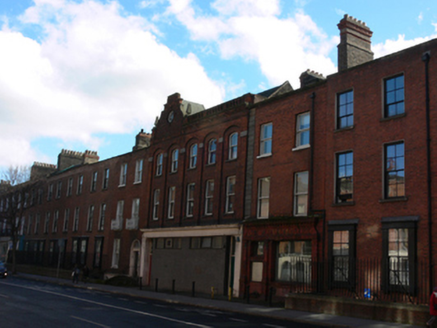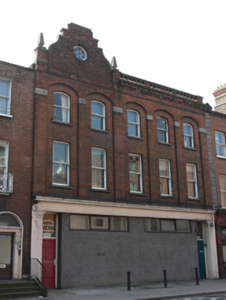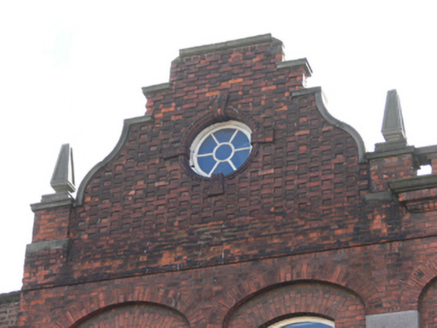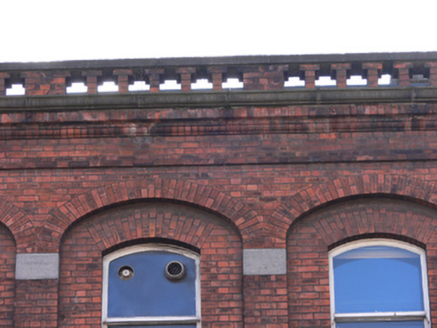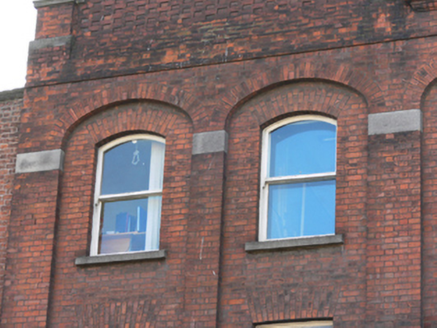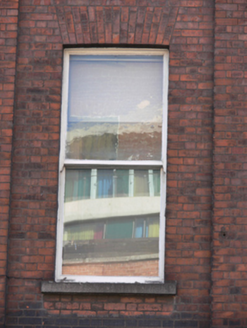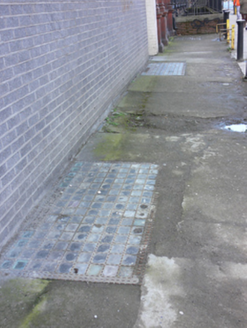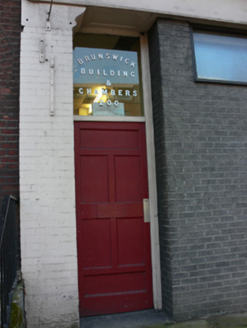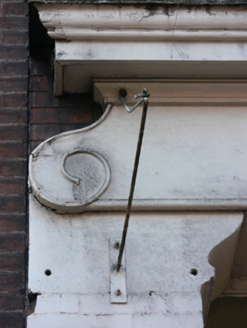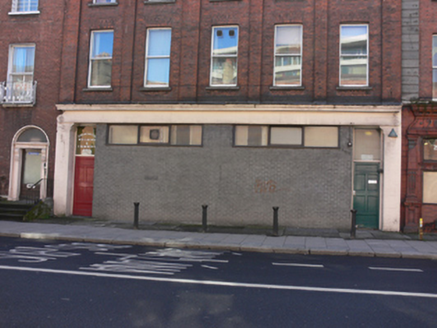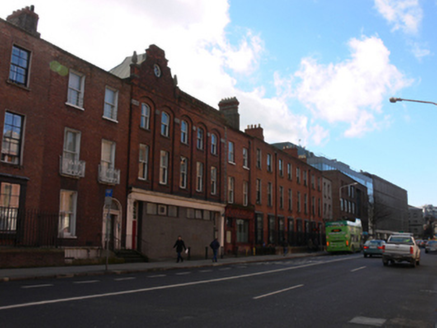Survey Data
Reg No
50020397
Rating
Regional
Categories of Special Interest
Architectural, Artistic, Social
Previous Name
Brunswick and Shamrock Pneumatic Cycle Factory
Original Use
Factory
In Use As
Office
Date
1890 - 1900
Coordinates
316348, 234132
Date Recorded
11/03/2015
Date Updated
--/--/--
Description
Terraced five-bay three-storey over basement former manufacturing premises, built c.1894, having shopfront to front (north) elevation. Now in use as part of college. Pitched slate and flat roof, concealed behind red brick open parapet over carved granite cornice and moulded brick eaves course, with shaped gable to east end, having carved granite coping and finials, and red brick chimneystacks with clay pots. Red brick, in Flemish bond, to walls, having segmental-headed blind arcading on red brick double-height pilasters with granite capitals. Oculus to gable having moulded brick surround and timber framed window. Segmental-headed and square-headed window openings with granite sills and one-over-one pane timber sliding sash windows. Shopfront comprising brick pilasters having timber nameplate with curved terminals and carved cornice. Blocked square-headed window openings. Square-headed door openings with fixed pane overlights and recent timber panelled doors. Cubed glass basement lights having steel glazing bars, set to footpath to front. Street fronted on Pearse Street.
Appraisal
The asymmetrical façade makes this building stand out from its neighbours. By the 1860s a building on the site was occupied by Lewis Donegani, merchant, mould, artificial stone, and plaster of Paris manufacturer, and by Del Vecchio, artificial stone figure and ornament manufacturer. However this building is a later replacement, built as a factory for the first all-Irish bicycle. By 1896 they were turning out 80 bicycles a week. Its quality brick detailing is very much in keeping with a commercial premises making a statement on the street. Great Brunswick Street was laid out by the Wide Street Commissioners in 1812 after a long negotiation with Trinity College, whose grounds define the southern side of the street. Lots were sold by public auction from 1813, and construction continued for the next forty years. The street, Dublin’s longest, was renamed in 1922 after William and Patrick Pearse, who were executed in 1916. The Pearse family had a business at number 27.
